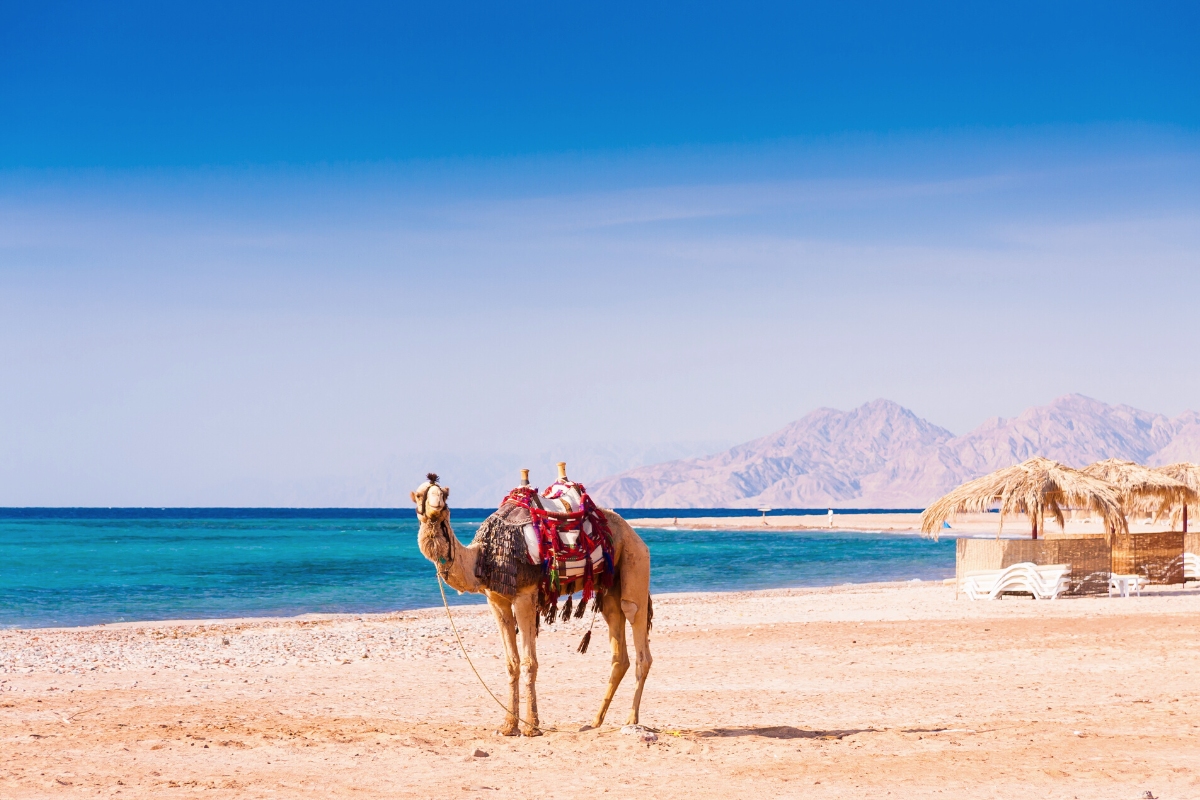


From vibrant coral reefs to ancient ruins, the Red Sea region offers an array of experiences that will leave you spellbound. Read on to find out how to make the most out of your time there.
Snorkeling and diving adventures
Let’s not beat around the bush: the Red Sea is one of the very best places in the world to go snorkeling and/or SCUBA diving. Over millions of years, the Red Sea has developed its unique ecosystem, with warm temperatures and high salinity, creating an environment that fosters a rich variety of marine life. The coral reefs, which are among the oldest in the world, provide shelter to a dazzling array of marine creatures. Snorkelers and divers can encounter colorful fish species, graceful rays, and – if you’re lucky – playful dolphins. Whether you're a seasoned diver or a complete beginner, the Red Sea offers diving experiences suitable for all levels, ensuring that everyone can witness its underwater wonders.
Ras Mohammed National Park and the Giftun Islands
Section Type: standardWidthImageS

Ras Mohammed National Park, located at the southern tip of the Sinai Peninsula, is arguably the most dazzling jewel in Egypt's Red Sea crown. Designated as Egypt's first national park in 1983, Ras Mohammed is renowned for its pristine coral reefs and untouched mangroves. The park's waters teem with life, hosting over 1,000 species of fish and a vast array of corals, making it a paradise for snorkeling and diving enthusiasts. And it’s not just its underwater assets that impress: Ras Mohammed's desert landscapes are also well worth exploring.
The Giftun Islands are a sanctuary of serenity, offering a respite from the hustle and bustle of everyday life. With their white sandy beaches and turquoise lagoons, the Giftun Islands provide a picturesque setting for relaxation and exploration. And the snorkeling is, predictably, top notch.
Luxor and the Valley of the Kings
Section Type: standardWidthImageS
Karnak Temple Complex was built sometime between 2055 BC and around 100 AD in worship of the Gods Amun, Mut, and Khonsu.

For a deeper connection with Egypt's ancient history, a trip to Luxor is a must. Often referred to as the "world's greatest open-air museum," Luxor boasts an array of archaeological treasures that date back thousands of years. The temples of Luxor and Karnak stand as monumental symbols of ancient Egyptian architecture and grandeur. The Karnak Temple complex, with its colossal columns and intricate hieroglyphs, once served as the religious center of ancient Egypt. A short journey from Luxor leads to the Valley of the Kings, where pharaohs were laid to rest in elaborately decorated tombs. The famous tomb of Tutankhamun, discovered by Howard Carter in 1922, offers a glimpse into Egypt’s glorious past.
Desert safari adventures
While the Red Sea's aquatic wonders steal the spotlight, the allure of its surrounding desert landscapes is equally captivating. We highly recommend exploring the untamed beauty of the Eastern Desert on a desert safari adventure. Climbing aboard a 4x4 vehicle or atop a camel, you’ll venture into the heart of this arid and inhospitable landscape. Golden sand dunes and ancient rock formations create a picturesque panorama that will leave you in awe of nature's creativity. As the sun sets over the desert, the skies light up in a mesmerizing display of colors, making for a magical and unforgettable experience.
Abu Simbel Temples
Section Type: standardWidthImageS
This Abu Simbel Temple has four colossal statues of Ramesses II. One partially collapsed due to an earthquake, so its remnants sit at the feet of the statue.

Venturing further south to Aswan, history enthusiasts can visit the legendary Abu Simbel Temples, one of Egypt's most iconic UNESCO World Heritage Sites. Built during the reign of Ramses II, the temples were carved into the mountainside to showcase the pharaoh's power and eternal glory. The two temples, dedicated to Ramses II and his beloved wife Nefertari, are a testament to ancient Egyptian architecture and engineering prowess. What makes Abu Simbel even more extraordinary is that it was relocated in the 1960s to save it from being submerged by the waters of Lake Nasser – a monumental feat in itself.
Section Type: cta
The Red Sea and surrounding areas are one of Egypt’s biggest drawcards. From kaleidoscopic marine life to iconic temples and silent deserts, there really is something for everyone. Experience it for yourself with SA Expeditions.


Copyright © 2025 SA Luxury Expeditions LLC, All rights reserved | 95 Third Street, 2nd floor, San Francisco, CA, 94103 | 415-549-8049
California Registered Seller of Travel - CST 2115890-50. Registration as a seller of travel does not constitute approval by the state of California.










